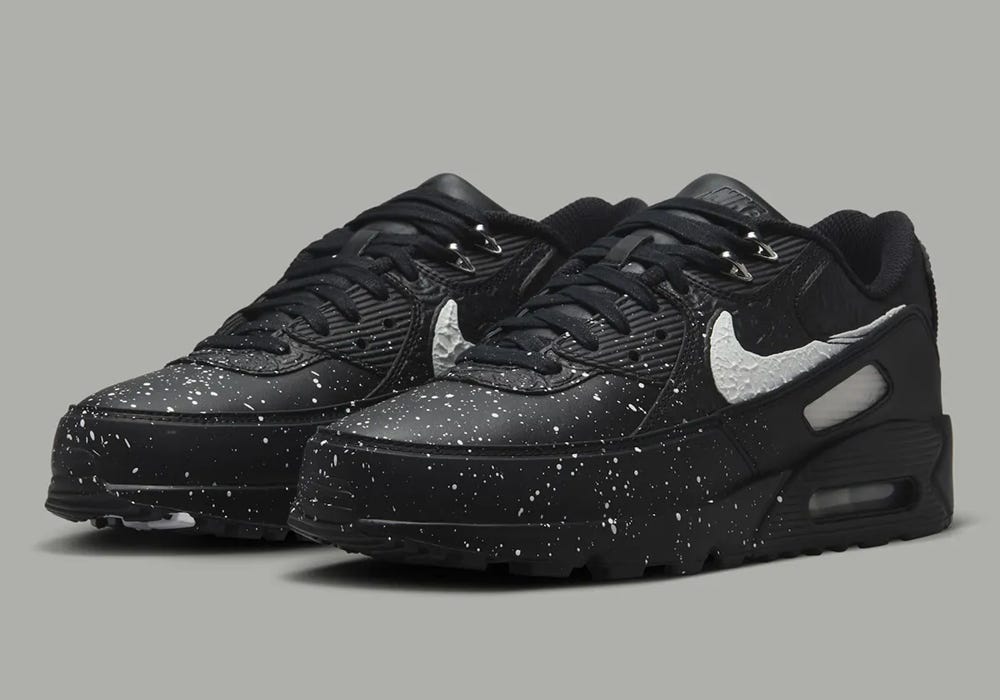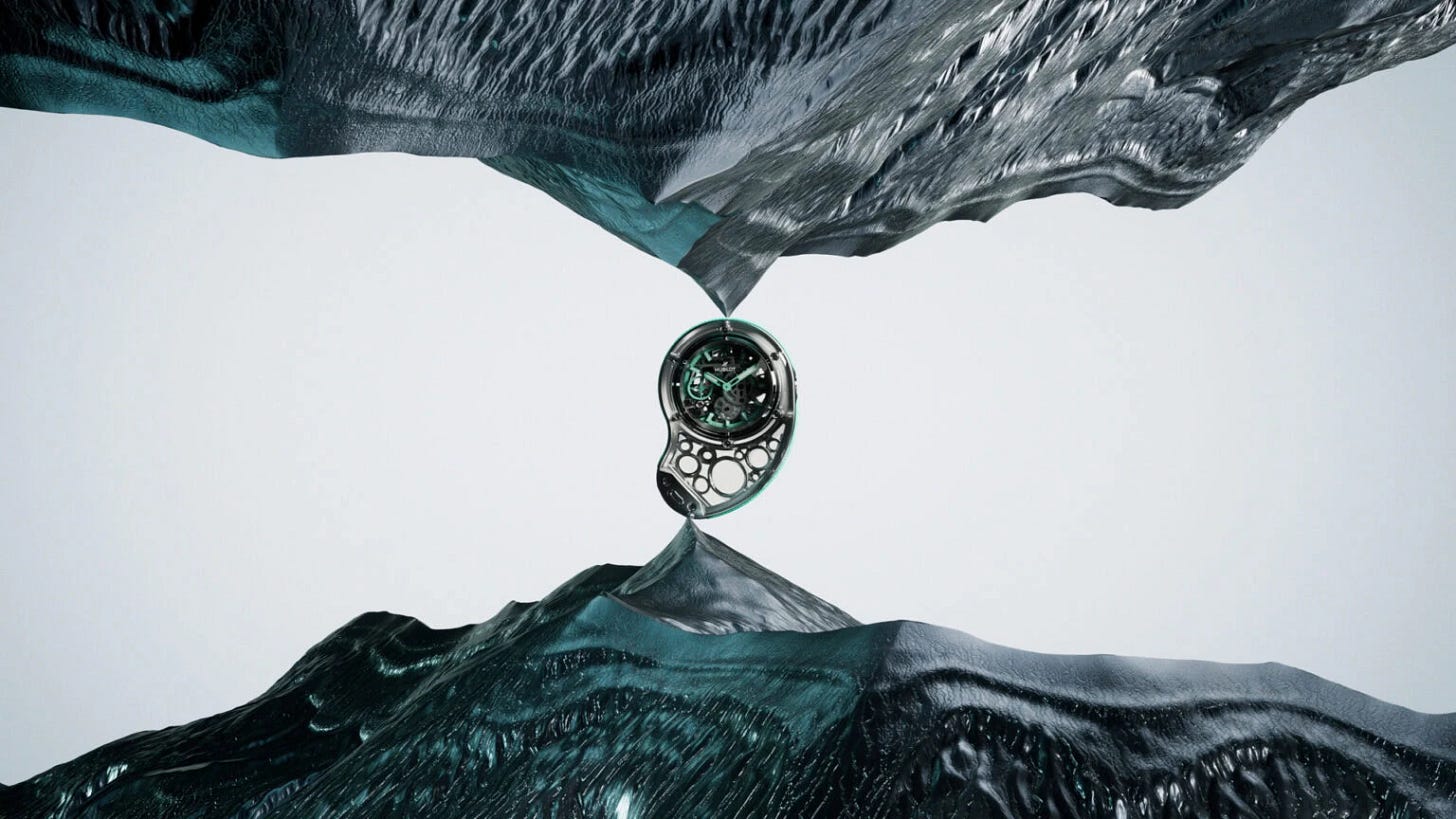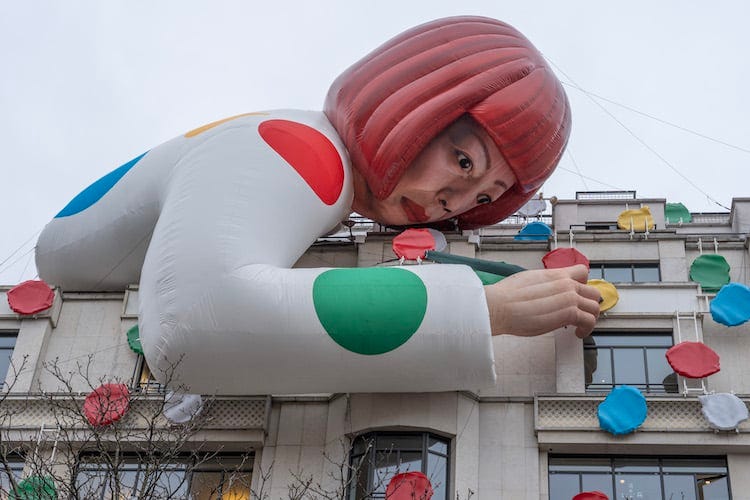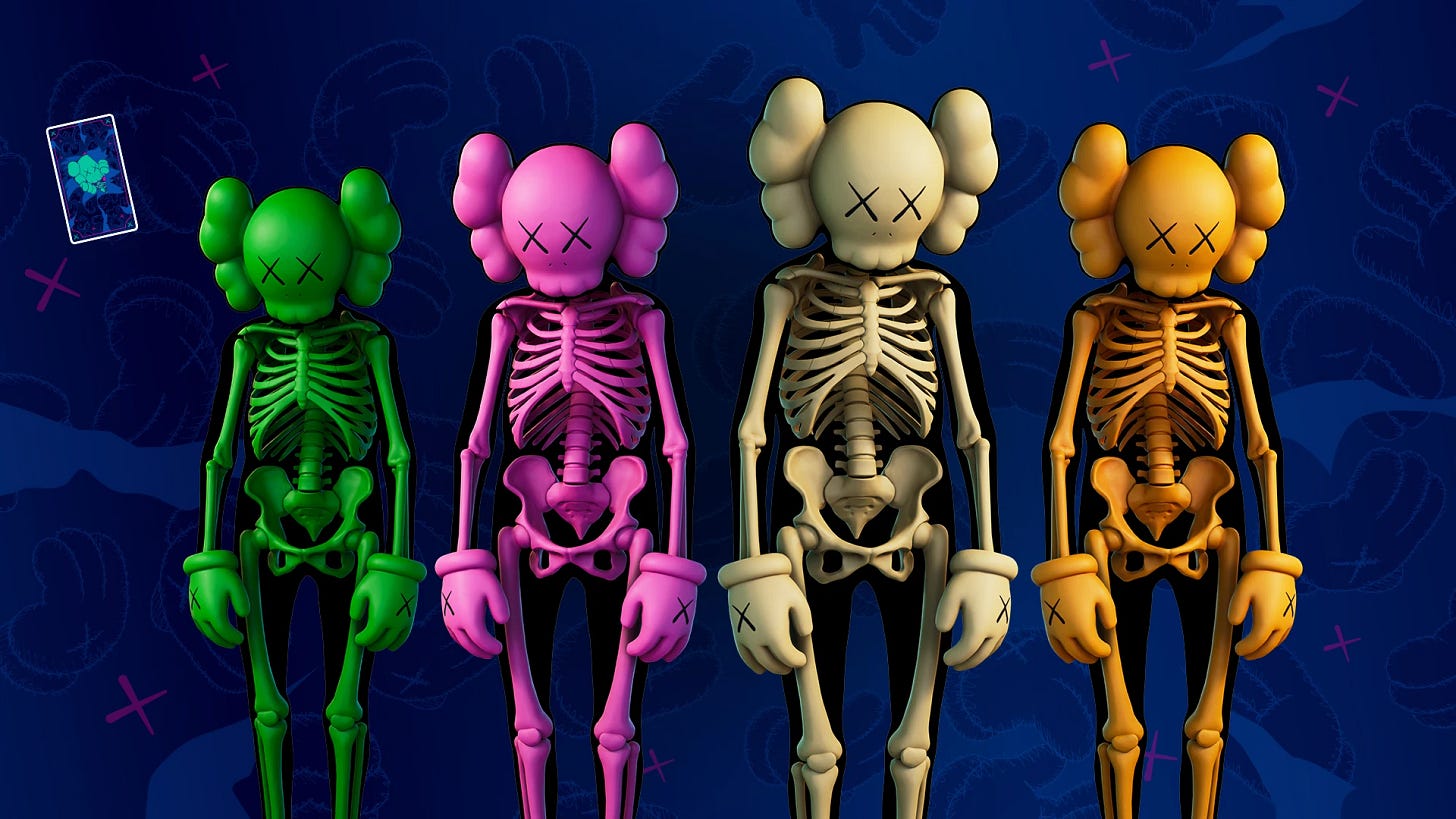In 2025, creativity has become the coin of the realm. Ideas, art, and culture now trade as powerfully as money. Look around: the brands capturing hearts (and wallets) today aren’t just selling products, they’re selling creativity, story, and soul. A bold mural on a sneaker or a sculptural watch can spark more buzz than any ad campaign. The world’s most influential companies have realised that cultural capital is the new gold. They’re racing to collaborate with artists, designers, and communities to infuse their brands with relevance and magic. Those who hesitate risk fading into irrelevance in a society that values creative expression as the highest social and economic currency.
The stakes are high and the message is clear: invest in creativity now or get left behind. In this article, we’ll journey through why creativity has become true cultural currency in 2025, see how forward-thinking brands are cashing in on collaborations with artists, and discover why those who invest in culture today will own the markets of tomorrow. This is a disruptive ride into the new era where art and commerce collide.
Creativity: The Ultimate Currency of 2025
Why call creativity a “currency”? Because in 2025, creative influence translates directly into value – social value, brand value, and yes, financial value. In an age of infinite content and choice, what captures attention and loyalty is not cheap gimmicks or bland mass-marketing, but authentic creativity. Cultural relevance can make or break a brand. As Flavilla Fongang said, “The brands that win now and in the future won’t be the ones that borrow culture. They’ll be the ones who build with it early, intentionally, and consistently.”linkedin.com In other words, brands must actively participate in culture, not just co-opt it.
This shift has been building for years. Youth culture especially prizes originality and authenticity – being “basic” is the ultimate sin, while being creative confers clout. From viral TikTok artists to streetwear designers, those who create something fresh set the trends. Brands have caught on to the fact that to stay relevant, they need to plug into these creative energies. Cultural currency means that a brand’s standing in the cultural conversation is as important as its quarterly sales. A limited-edition drop designed by an artist can generate the kind of hype money can’t buy, turning brand products into social phenomena. In short, creativity is clout. And clout, in 2025, is currency.
Crucially, creativity drives not only social capital but economic results. When a collaboration or creative campaign resonates, it can lead to explosive growth in demand, new customer bases, and enduring brand loyalty. We see this across industries: technology may be advancing, but it’s creative storytelling and cultural alignment that differentiates winners. Companies investing in creative collaborations aren’t doing charity – they’re making a savvy strategy move to stockpile cultural currency now, knowing it will convert to market share later. As we’ll see, the examples are everywhere, from sneakers to sports jerseys to luxury goods. Creativity is the asset that multiplies – the more you invest in it, the more value you accrue.
The Creative Collaboration Boom
Nike even turned one of its classic sneakers into a canvas for Nigerian artist Olaolu Slawn, yielding a graffiti-speckled Air Max 90 that looks more like street art than sportswear. In fact, Olaolu Slawn, hailed as “one of the most in-demand artists in the world right now”hypebeast.com – made history as the first Nigerian-born creative to design an official Nike sneakerhouseofheat.co. The resulting shoe features Slawn’s bold, raw artwork splashed across a timeless Nike Air Max 90 silhouettehypebeast.com. It’s not just a sneaker; it’s a statement. By giving a young artist the reins, Nike injected its brand with Slawn’s cult-followed creative energy and signalled to a new generation that the Swoosh gets culture. This is creativity as currency in action: the shoes sold out, hype ensued, and Nike’s cultural equity skyrocketed among art-savvy sneakerheads.
Nike x Slawn is just one thrilling example in a wave of brand-artist collaborations defining this era. Big brands across the board are tapping artists to infuse fresh relevance into their products and experiences. A few standout collaborations making headlines:
Brooklyn Nets x KAWS – The NBA’s Brooklyn Nets handed over their 2024-25 City Edition uniforms to Brooklyn-based art icon KAWS. The result? A jersey that fuses the team’s identity with KAWS’ signature abstract motifsnetsdaily.com. Instead of a typical sports design, the uniform became a wearable piece of art, complete with subtle references to KAWS’ famous “TENSION” paintings and his “XX” logo on the waistbandhypebeast.comhypebeast.com. “The uniform fuses core elements of the Nets brand with notable components of KAWS’ work,” the team announcednetsdaily.com. The collaboration was so successful that it’s the second year in a row the Nets have teamed with KAWS, and fans snatched up the artist-designed jerseys as fast as they dropped. This partnership brought street art swagger to the sports world, boosting the Nets’ cultural cool factor far beyond basketball.
Daniel Arsham x Hublot – Even the stuffy world of Swiss luxury watches is getting disrupted by creativity. Hublot, known for its avant-garde approach, recruited contemporary artist Daniel Arsham to reinvent the classic timepiece. The result was the jaw-dropping Arsham “Droplet”, a sculptural pocket watch made of sapphire crystal that looks like it fell from the futurehodinkee.com. Hublot’s gamble on Arsham paid off big. As watch experts noted, “working with world-famous contemporary artists has thus far been a successful formula for Hublot… creating a watch with a globally recognized artist means exposure to corners of the consumer public that would simply never notice you otherwise.”hodinkee.com In other words, by embracing Arsham’s creativity, Hublot gained access to new audiences (art fans who might never have cared about Hublot before) and instant hype to sell a limited run of high-end watches. The collaboration blurred the line between timepiece and art object – exactly the kind of disruptive move that turns cultural currency into profit. Hublot’s team clearly understands that a dose of artistic cool makes their brand feel less like a dusty relic and more like a trendsetter.
Louis Vuitton x Yayoi Kusama - Nowhere is the power of creative currency more evident than in the luxury fashion arena. Louis Vuitton has practically turned artistic collaboration into a high art form. Their partnerships with world-renowned artists (from Takashi Murakami’s famous multicoloured monograms to Jeff Koons and others) have produced some of the most coveted fashion items of the past two decades. In 2023, Louis Vuitton reunited with Japanese avant-garde artist Yayoi Kusama for a blockbuster collection that splashed her iconic polka dots across bags, clothes, and even store facades. How important was this collab to LV? The company was so confident in its success that it factored the Kusama collection’s sales into its quarterly financial forecastshighsnobiety.com – essentially banking on art-driven creativity to boost the bottom line. And boost it did. Fans flocked to grab luxury goods “laden with the artist’s touch,”highsnobiety.com, from polka-dotted handbags to trance-like dot-covered trench coats. Louis Vuitton didn’t stop at products: they transformed stores around the world into immersive Kusama experiences. In Paris, a gigantic inflatable figure of Kusama was mounted on the flagship store’s roof, leaning over to “paint” multicoloured dots all over the building’s façademymodernmet.com. Shoppers in New York encountered a lifelike animatronic Kusama robot “painting” the Fifth Avenue store windowmymodernmet.commymodernmet.com. This surreal spectacle blurred the line between retail and art installation, drawing huge crowds. It was, as Louis Vuitton’s former creative director Marc Jacobs once said of these projects, a “monumental marriage between art and commerce”myartbroker.com. By investing massively in cultural creativity, Louis Vuitton generated a frenzy of media attention, social media buzz, and collector mania – all of which reinforce its position as a cultural tastemaker (and bring in serious revenue). The cultural currency of collaborating with an artist as beloved as Kusama is immeasurable: it makes the brand aspirational, culturally relevant, and emotionally resonant in a way that pure luxury status alone can’t.
These examples all share a common DNA: two worlds merging to create something new. When brands and artists collaborate authentically, they each contribute their identity and audience, and both sides gain. The brand gains cultural cachet – suddenly it’s not just a company, it’s part of the art conversation. The artist gains a massive platform and commercial validation, turning their creativity into widely distributed products (and often, considerable profit). Consumers, in turn, get to buy a piece of that magic. A sneaker painted by Slawn, a jersey touched by KAWS, a watch sculpted by Arsham, a bag dotted by Kusama – these are more than goods, they’re cultural artefacts. They confer status on the owner not just as a fan of the brand, but as someone tuned into creativity. Owning these items is like holding cultural currency in your hand.
And importantly, these collaborations ignite communities. Nike x Slawn brought together sneakerheads and art lovers; Nets x KAWS united sports fans with street art aficionados; Louis Vuitton x Kusama bridged luxury fashion and contemporary art audiences. Each project created conversations, content, and a sense of shared excitement across communities. By investing in creativity, brands also invest in community building – they signal that they value the culture and people behind it, not just the transaction. This pays off with deeper brand loyalty and a community that feels a sense of ownership and pride in the brand’s cultural moves.
Own the Future or Become Irrelevant
The writing is on the wall (sometimes literally, in the form of a mural): brands and communities that invest in culture today will own tomorrow’s markets. Cultural relevance isn’t a “nice-to-have” anymore – it’s do or die. The next generation of consumers has grown up in an era of constant creative flux, where trends are born on Instagram art posts and TikTok songs, and where collaborations between unlikely partners are the norm. If a brand isn’t present in those cultural moments, it risks being forgotten. As one observer noted, we live in a time of “society’s thirsty hunger for more when it comes to art and fashion.”myartbroker.com There’s an almost insatiable desire among consumers for brands to surprise and inspire them with creative ventures. Those who satisfy this hunger will be rewarded with attention and affection; those who don’t will starve for relevance.
Investing in creativity is a long game with compounding returns. It’s like planting seeds in cultural soil – over time, those seeds grow into brand legends. Think about the brands that are dominating cultural mindshare right now: they all have deep, authentic ties to creative culture. Nike has spent decades aligning with music, art, and subcultures (from sponsoring graffiti artists to iconic ad campaigns with poets and rebels). That’s why when Nike drops an artist-collab sneaker today, it feels natural and credible. Adidas, conversely, learned the hard way that if you don’t stay culturally sharp (they famously lost some edge in the late 2010s), you get overtaken by those who do. Luxury houses like Louis Vuitton and Gucci have entire strategies around art and street culture now – they know that today’s hype can turn into tomorrow’s enduring brand mythos. A teenager who falls in love with LV through a Yayoi Kusama collab might become a loyal customer for life, because that brand represents creativity to them.
It’s not only corporations that need to heed this call – communities and cultural institutions do as well. Cities that invest in public art, music festivals, and creative hubs become magnets for tourism and talent. (Just look at how the art scene revitalized areas of cities like Detroit or Miami.) Online communities that nurture creators (for example, platforms like Patreon or Kickstarter) end up fostering the next wave of economic leaders in the creative economy. Even sports teams (like the Nets we saw) that embrace local culture strengthen their community ties and broaden their fanbase beyond sports. The principle is universal: If you invest in culture, you invest in people’s passion – and that is the most sustainable investment you can make.
On the flip side, failing to invest in creativity is risky. A brand stuck peddling the same old thing without cultural infusion will sooner or later watch consumers flock to a fresher upstart that “just feels cooler.” In blunt terms, irrelevance is the fate of those who ignore cultural currency. We’re already seeing this in certain sectors: companies that rested on legacy or pure functionality are struggling, while those that wrapped their identity in art, design, or ethos are thriving. It’s a cultural Darwinism of sorts – adapt creatively or fade away.
As we stand in 2025, the message for brands, organisations, and communities is bold and urgent: invest in creativity now or risk being forgotten. Creativity is the new cultural currency, and those who hold it will shape the future. This is a call to action to every big brand CEO, every marketing strategist, every community leader, every startup founder, and even every artist collective: make culture your priority. Partner with creatives, empower diverse voices, fund the experimental projects, and reimagine your products as experiences and expressions. Do it early, do it earnestly, and do it consistently.
The examples we explored – from Nike’s artful sneakers to Louis Vuitton’s immersive art store takeovers – show that when you embrace creativity, you don’t just get a cool campaign, you get cultural immortality. You become part of the fabric of society’s stories and values. In a world where attention is priceless, creativity is your credit line. Brands that recognise this have already pulled ahead of the pack. Those that haven’t, well, the clock is ticking.
Imagine the markets of tomorrow: they belong to the brands who were brave enough to be cultural investors today. They belong to communities that championed their creative members and built platforms for expression. They belong to companies that treated artists as strategic partners, not afterthoughts. These pioneers will reap the rewards of loyalty, love, and longevity. Everyone else will be scrambling, too late, to buy cultural relevance at a premium – but by then, the cultural currency will be held by someone else.
Don’t wait for that to happen. Be bold. Be disruptive. Invest in creativity as if your future depends on it – because it does. This is your moment to mint cultural currency that will appreciate for years to come. In the new economy of ideas and inspiration, fortune favours the creative. Brands and communities that invest now will not only profit in the economic sense, but will become the legends, the leaders, the beloved icons of our culture. And that is priceless.
Now is the time – step into the creative arena, or step aside. The future is being written in bold strokes of paint, in striking design, in fearless creativity. Will your brand’s name be on that canvas? The choice is yours, and the clock is running. Creativity is the new cultural currency – invest now, and claim your stake in the future.
Sources: Recent reports and news on brand-art collaborations and cultural trends were used to inform this article, including examples from Hypebeast, NetsDaily, Hodinkee, Highsnobiety, MyArtBroker, and othershypebeast.comhouseofheat.conetsdaily.comhodinkee.comhighsnobiety.commymodernmet.commyartbroker.comlinkedin.com, demonstrating the growing convergence of commerce and creativity in 2025’s cultural landscape.












